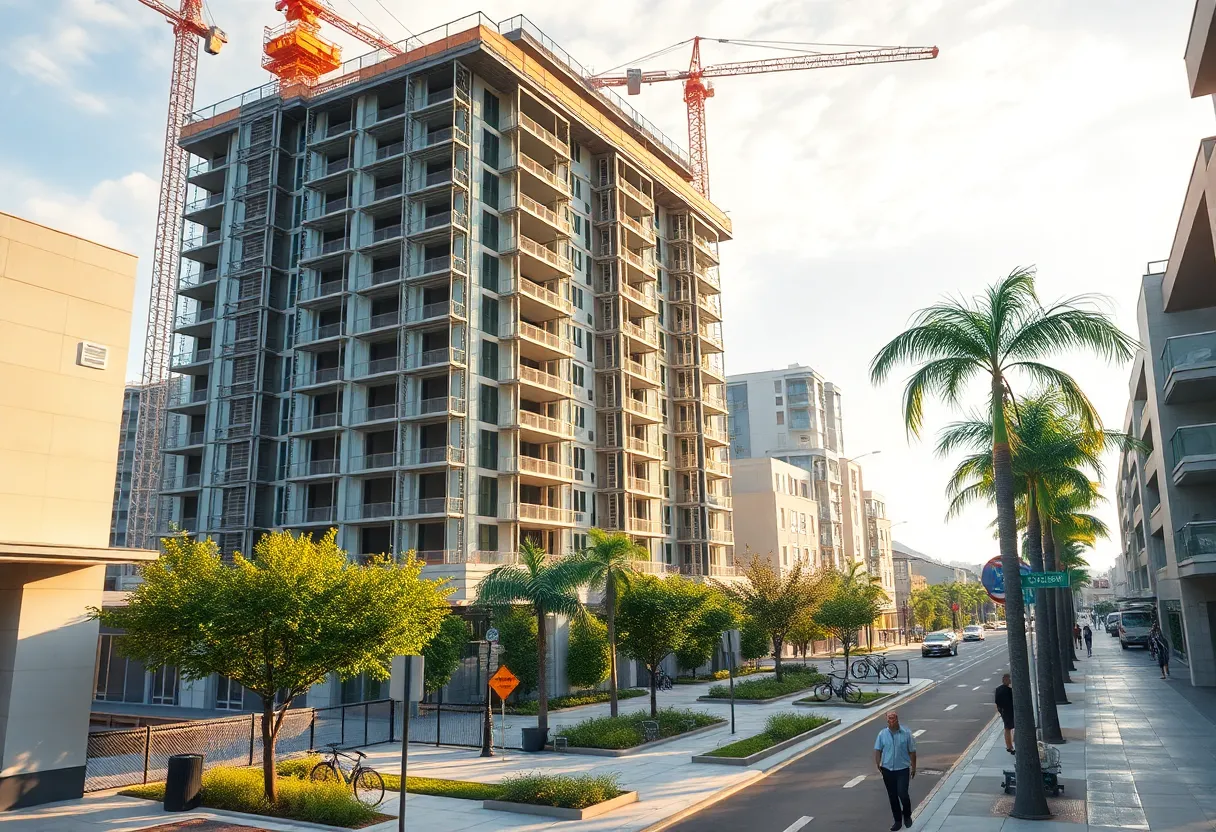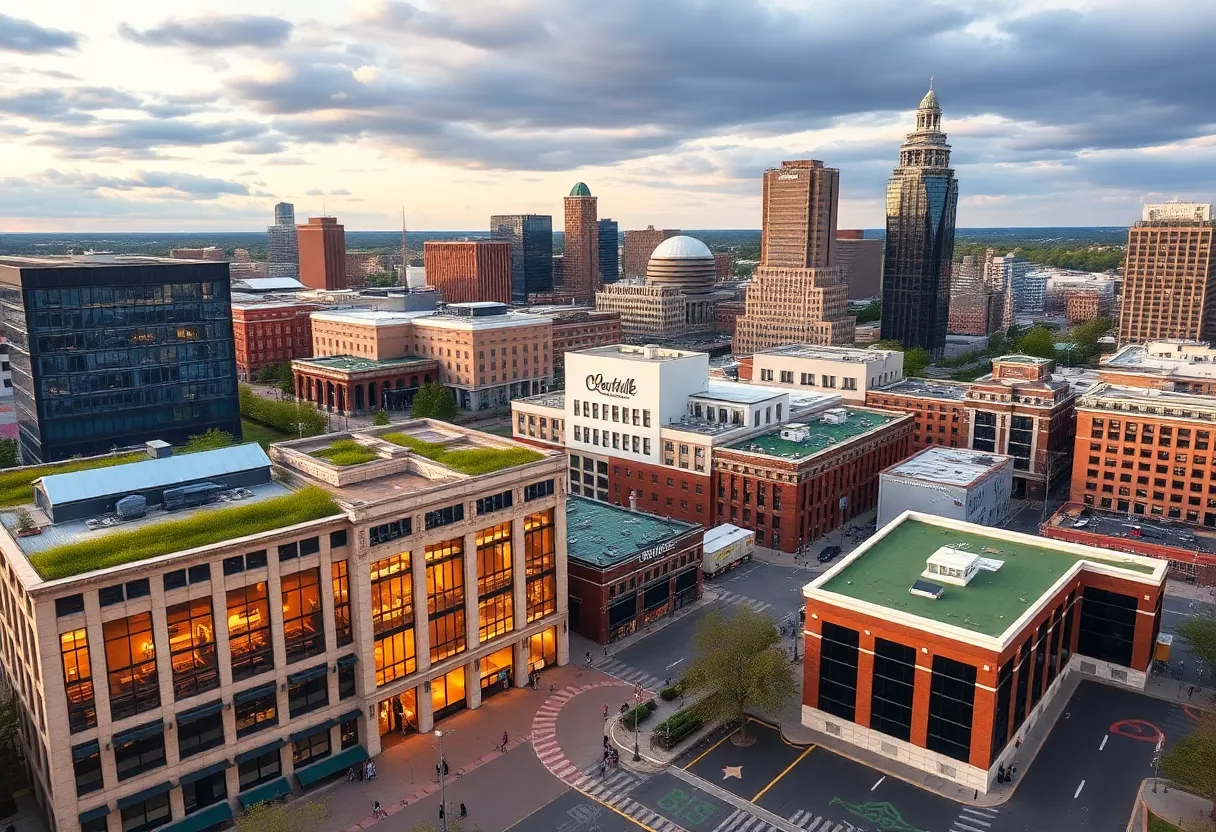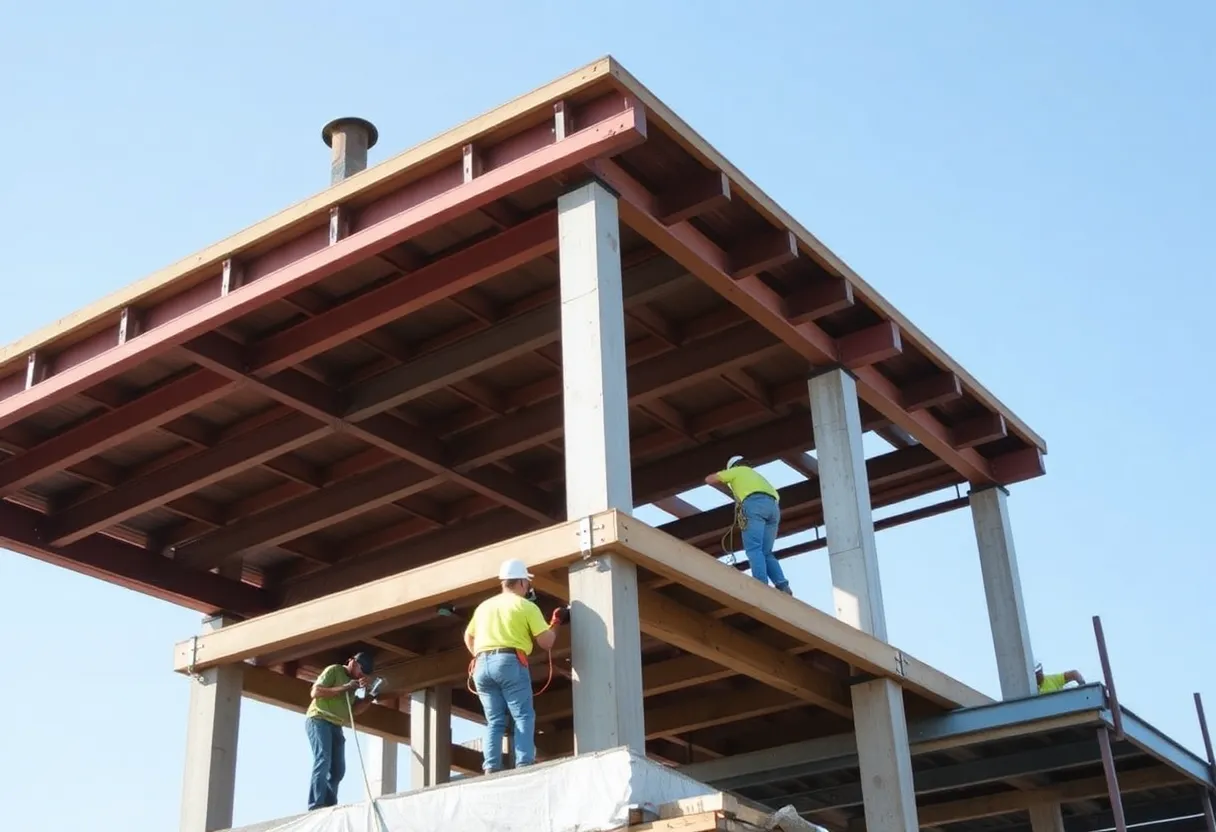Echo Park, Los Angeles, September 22, 2025
News Summary
A Los Angeles developer closed a $46.6 million construction loan to build The Court Residences, a 189-unit workforce housing project in Echo Park targeted primarily at households earning up to 80% of AMI. The financing combines senior debt from a national bank community development division with mezzanine funds from a nonprofit capital intermediary and a municipal finance authority. The developer used private capital and density incentives to limit per-unit costs to about $247,000 and avoid certain public wage rules. Groundbreaking is complete and construction is underway, with rents expected roughly 30–40% below neighborhood market rates.
Visionary Developments closes $46.6M construction loan for 189-unit workforce housing in Echo Park
What happened: A Los Angeles real estate firm secured $46.6 million in construction financing to build a 189-unit affordable apartment complex in Echo Park. The project, named The Court Residences, held its groundbreaking earlier this month and is planned as workforce housing targeted to households earning up to 80% of area median income (AMI).
Key financing and partners
The construction loan is a mix of senior debt and mezzanine financing. Senior debt was provided by a major national bank’s community development banking division, while mezzanine funds were supplied by a nonprofit capital intermediary and a municipal finance authority. The combined capital package funds the initial construction phase and positions the project to move forward without public subsidy requirements tied to certain wage rules.
Project cost and design approach
The development’s cost works out to roughly $247,000 per unit, a figure described by the developer as competitive for affordable housing in Los Angeles. The developer credits lower per-unit costs to streamlined approval processes and higher density secured through a city program designed to speed affordable housing production. The team also opted to rely on private funding to avoid prevailing wage obligations that come with some public funding sources.
Target tenants and expected rents
The Court Residences will be operated as workforce housing, with most units set for households at or below 80% AMI. The development is expected to offer rents substantially below neighborhood market rates — the developer estimates rents will be about 30%–40% below Echo Park market-rate rent once occupied. A portion of units across the developer’s pipeline are planned for slightly higher AMI bands to create a mix of household income levels.
Developer background and goals
The project is the firm’s first affordable development in a pipeline of roughly 940 units under development across the city. Leadership on the project includes the firm’s founder and a family partner with a background in professional basketball; the founder previously played in a professional development league. The developer sees the project as a model for building affordable housing in amenity-rich neighborhoods rather than isolating it in lower-cost areas, and plans include design touches and community-focused amenities intended to avoid the feel of a typical subsidized building.
Where it sits in a broader pipeline
The Court Residences is one of three local projects the developer has advanced recently. Other planned projects include a 33-unit site near a major freeway and a 90-unit site along the eastern end of a well-known boulevard. In each of those projects, most units are planned for households earning no more than 80% AMI, with a smaller share reserved for households up to 120% AMI.
Neighborhood context and market data
Echo Park has seen a steady flow of multifamily proposals and construction. Current local multifamily inventory is in the low thousands of units, with a modest vacancy rate and a pipeline of projects under construction. Office vacancy and hotel planning figures also show continued development interest in the area. The developer selected Echo Park for its walkability, transit access, and proximity to downtown, describing the neighborhood as one where added affordable units can make a tangible difference in local housing options.
Why the financing matters
The combination of private senior debt and mezzanine financing allowed the developer to close a construction loan without tapping certain public subsidy layers. That approach helped speed the deal and avoid certain labor cost rules tied to public funding, but it also requires careful underwriting to ensure long-term affordability commitments are met while keeping operations financially viable.
What’s next
With the construction loan closed and a groundbreaking completed, construction is underway. The developer has indicated interest in advancing additional affordable projects in nearby neighborhoods, and hopes the Echo Park project will serve as a replicable example for building affordable, workforce-focused housing in amenity-rich parts of the city.
Frequently Asked Questions
What is the total construction financing amount?
The construction financing closed at $46.6 million.
How many units will The Court Residences have?
The project will include 189 units.
Who provided the financing?
Financing includes senior debt from a national bank community development banking division and mezzanine financing from a nonprofit capital provider and a municipal finance authority.
Who is the project intended to serve?
The development is planned as workforce housing, primarily for households earning up to 80% AMI, with some units reserved up to 120% AMI in the developer’s broader pipeline.
What is the estimated cost per unit?
Estimated development cost is about $247,000 per unit.
Will rents be below market?
Yes. Rents are expected to be about 30%–40% below typical Echo Park market rates.
Why did the developer avoid public funding?
The team chose private funding to avoid certain prevailing wage requirements tied to public subsidies, and cited faster closing and simpler compliance as advantages.
Are more projects planned by this developer nearby?
Yes. The developer has additional planned projects in nearby neighborhoods, including smaller and mid-size multifamily developments with similar affordability targets.
{
“@context”: “https://schema.org”,
“@type”: “FAQPage”,
“mainEntity”: [
{
“@type”: “Question”,
“name”: “What is the total construction financing amount?”,
“acceptedAnswer”: {
“@type”: “Answer”,
“text”: “The construction financing closed at $46.6 million.”
}
},
{
“@type”: “Question”,
“name”: “How many units will The Court Residences have?”,
“acceptedAnswer”: {
“@type”: “Answer”,
“text”: “The project will include 189 units.”
}
},
{
“@type”: “Question”,
“name”: “Who provided the financing?”,
“acceptedAnswer”: {
“@type”: “Answer”,
“text”: “Financing includes senior debt from a national bank community development banking division and mezzanine financing from a nonprofit capital provider and a municipal finance authority.”
}
},
{
“@type”: “Question”,
“name”: “Who is the project intended to serve?”,
“acceptedAnswer”: {
“@type”: “Answer”,
“text”: “The development is planned as workforce housing, primarily for households earning up to 80% AMI, with some units reserved up to 120% AMI in the developer’s broader pipeline.”
}
},
{
“@type”: “Question”,
“name”: “What is the estimated cost per unit?”,
“acceptedAnswer”: {
“@type”: “Answer”,
“text”: “Estimated development cost is about $247,000 per unit.”
}
},
{
“@type”: “Question”,
“name”: “Will rents be below market?”,
“acceptedAnswer”: {
“@type”: “Answer”,
“text”: “Yes. Rents are expected to be about 30%–40% below typical Echo Park market rates.”
}
},
{
“@type”: “Question”,
“name”: “Why did the developer avoid public funding?”,
“acceptedAnswer”: {
“@type”: “Answer”,
“text”: “The team chose private funding to avoid certain prevailing wage requirements tied to public subsidies, and cited faster closing and simpler compliance as advantages.”
}
},
{
“@type”: “Question”,
“name”: “Are more projects planned by this developer nearby?”,
“acceptedAnswer”: {
“@type”: “Answer”,
“text”: “Yes. The developer has additional planned projects in nearby neighborhoods with similar affordability targets.”
}
}
]
}
Quick reference — Key features
| Feature | Detail |
|---|---|
| Project name | The Court Residences |
| Units | 189 |
| Construction financing | $46.6 million (senior debt + mezzanine) |
| Per-unit cost | Approximately $247,000 |
| Target households | Primarily households at or below 80% AMI |
| Expected rent level | About 30%–40% below Echo Park market-rate rents |
| Financing partners | Senior community development lender; nonprofit mezzanine funder; municipal finance authority |
| Development strategy | Use density incentives from city program and private funding to speed delivery |
| Status | Groundbreaking completed; construction financing closed |
Deeper Dive: News & Info About This Topic
Additional Resources
- The Eastsider LA: Affordable housing in Echo Park, new Panera by LACC & other real estate news
- Wikipedia: Echo Park, Los Angeles
- Los Angeles Business Journal: LA Rising — Echo Park key projects
- Google Search: LA Rising Echo Park key projects
- The Detroit News: Pistons’ Tobias Harris joins forces with brother to help build affordable housing
- Wikipedia: Tobias Harris
- Los Angeles Times Opinion: Echo Park — homeless colony, gentrification, housing
- Encyclopedia Britannica: Echo Park (search)
- ABC7: Tenants in affordable bungalow court in Echo Park face eviction (2020)
- Google Scholar: Echo Park bungalow court eviction 2020
Author: Construction FL News
The FLORIDA STAFF WRITER represents the experienced team at constructionflnews.com, your go-to source for actionable local news and information in Florida and beyond. Specializing in "news you can use," we cover essential topics like product reviews for personal and business needs, local business directories, politics, real estate trends, neighborhood insights, and state news affecting the area—with deep expertise drawn from years of dedicated reporting and strong community input, including local press releases and business updates. We deliver top reporting on high-value events such as the Florida Build Expo, major infrastructure projects, and advancements in construction technology showcases. Our coverage extends to key organizations like the Associated Builders and Contractors of Florida and the Florida Home Builders Association, plus leading businesses in construction and legal services that power the local economy such as CMiC Global and Shutts & Bowen LLP. As part of the broader network, including constructioncanews.com, constructionnynews.com, and constructiontxnews.com, we provide comprehensive, credible insights into the dynamic construction landscape across multiple states.





